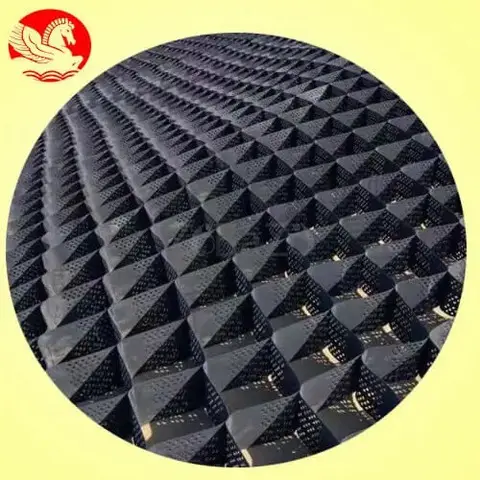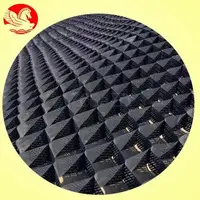Description
In the world of civil engineering and environmental conservation, innovative solutions are constantly sought after to address challenges ranging from soil erosion to road construction. Among these solutions, geocell technology has emerged as a versatile and effective method with applications across various industries. This article delves into the concept of geocell, its applications, benefits, and frequently asked questions surrounding its implementation.
Understanding Geocell:
Geocell, also known as cellular confinement system, is a three-dimensional geosynthetic structure made from high-density polyethylene (HDPE) or polypropylene (PP) material. It consists of interconnected cells that form a honeycomb-like structure when expanded. These cells are typically filled with soil, aggregate, or concrete, providing reinforcement and stability to the material within.
Applications of Geocell:
1. Soil Stabilization:
Geocells are extensively used in soil stabilization projects, particularly in areas prone to erosion. By confining the soil within the cells, geocells prevent lateral movement and promote compaction, improving the load-bearing capacity of the soil. This application is valuable in the construction of retaining walls, embankments, and slope protection measures.
2. Road Construction:
In road construction, geocells offer a sustainable alternative to traditional methods. They distribute loads more evenly, reducing stress on the underlying soil and minimizing deformation. Geocell-reinforced roads exhibit enhanced durability, resistance to rutting, and increased lifespan, making them ideal for both temporary and permanent roadways.
3. Erosion Control:
Geocells play a vital role in erosion control and shoreline protection projects. When filled with vegetation or aggregate, they create a stable surface that prevents soil erosion and promotes natural vegetation growth. Geocell-based erosion control solutions are environmentally friendly and provide long-lasting protection against water currents and wave action.
4. Retaining Structures:
The versatility of geocells extends to the construction of retaining structures such as walls and slopes. By confining the backfill material within the cells, geocells enhance the stability and structural integrity of these structures. They are particularly beneficial in projects where space constraints or challenging terrain pose significant challenges.
Benefits of Geocell Technology:
1. Improved Performance:
Geocells enhance the performance of civil engineering projects by providing reinforcement and stability to soil and aggregate materials. They mitigate issues such as soil erosion, rutting, and structural failure, resulting in more durable and resilient infrastructure.
2. Cost-effectiveness:
Despite their advanced engineering capabilities, geocells offer cost-effective solutions compared to traditional methods. Their lightweight construction reduces transportation and installation costs, while their long lifespan minimizes maintenance expenses over time. Additionally, the use of locally available fill materials further reduces project costs.
3. Environmental Sustainability:
Geocell technology promotes environmental sustainability by minimizing the ecological footprint of construction projects. By preventing soil erosion, promoting vegetation growth, and reducing the need for heavy machinery and excessive excavation, geocells contribute to ecosystem preservation and conservation efforts.
4. Versatility:
One of the key advantages of geocell technology is its versatility. From road construction to erosion control and retaining structures, geocells can be adapted to suit a wide range of applications and project requirements. Their modular design allows for easy customization and scalability, making them suitable for projects of all sizes and complexities.
Frequently Asked Questions (FAQs) About Geocell:
Q1: How long does geocell technology last?
A1: Geocell structures are designed to have a lifespan of 20 to 50 years, depending on factors such as environmental conditions, installation quality, and maintenance practices. Proper installation and routine inspections can maximize the longevity of geocell-reinforced infrastructure.
Conclusion:
Geocell technology represents a paradigm shift in civil engineering and environmental conservation, offering innovative solutions to longstanding challenges. From soil stabilization to erosion control and beyond, geocells demonstrate versatility, performance, and sustainability. As the demand for resilient infrastructure and eco-friendly construction practices continues to grow, geocell technology stands poised to play a pivotal role in shaping the future of engineering and conservation efforts worldwide.
























